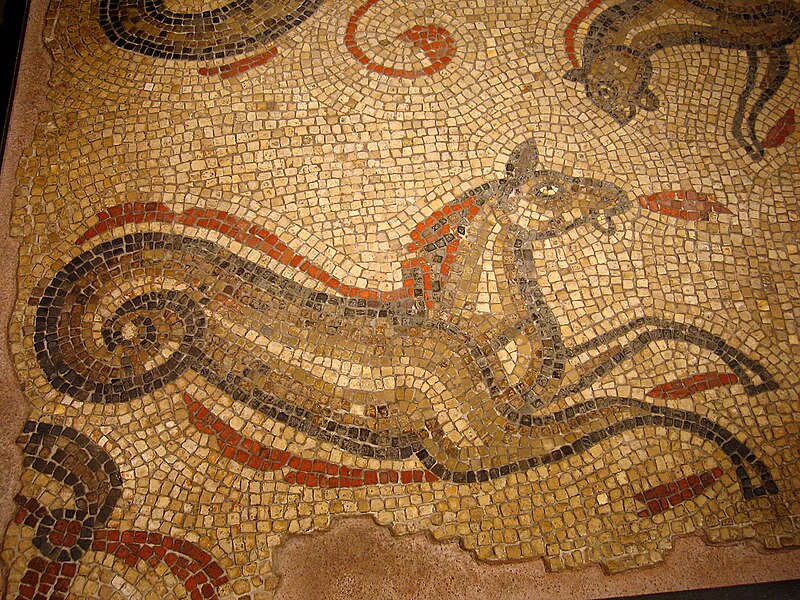Here in the northern hemisphere, the warmth of June has turned many a mind to visions of the seaside, mountains, open country, islands, campfires, and drinks with umbrellas. As summer progresses, we'll evacuate cities en masse and escape to less densely populated climes. We're going on holiday. Finally.
The denizens of Regency England loved going on holiday, too. In fact, the idea of tourism really hit its stride during the Regency, as improvements in transportation (both roads and conveyances) made travel easier and more accessible to a wider portion of the population. The haut ton had been gallivanting all over Britain and the Continent for ages, of course, but during the Regency, even the less wealthy gentlefolk were smitten with the notion of holidays and tours.
 |
| A sea horse. Oh, those Romans and their visual puns! |
Bath's mineral waters had long been thought to hold healing properties. For centuries, it was a destination for those afflicted with every sort of physical complaint. In the eighteenth century, a gentleman by the name of Beau Nash acted as Master of Ceremonies for Bath, and worked to establish Bath as the premier spa resort in England. He was seemingly everywhere in town, greeting new arrivals, warning tourists away from medical charlatans and card-sharks, escorting ladies to balls, and even matchmaking. Nash encouraged a more casual social scene in Bath, wherein the classes mingled more easily than they did in London. By the Regency, Bath's popularity with the aristocracy was on the wane, but it remained a favored spot for those who had visited during Nash's time, as well as with invalids come to "take the waters" for their curative effect.
 |
| The Grand Pump Room, not to be confused with the Mediocre Pump Room. |
 |
| That water looks delicious. |
Jane Austen lived in Bath for nearly a decade. Two of her novels, Northanger Abbey and Persuasion are set in and around Bath. She was not overly fond of the town, finding the society there to be rather superficial. However, when her brother Edward's gout required he take the cure, she was confident in the water's ability. She wrote in a letter to her sister:
'He was better yesterday than he had been for two or three days before...He drinks at the Hetling pump...is to bathe tomorrow.' And... 'Edward has been pretty well this last week, and as the waters have never disagreed with him in any respect, we are inclined to hope he will derive advantage from them in the end'.
I hope you've enjoyed our brief jaunt to Bath! Throughout the summer, I'll be blogging about more Regency holiday destinations, so check back soon to see where our travels take us next.

I loved this! Thanks for the trip to Bath on a wet summer morning (at least where I live).
ReplyDeleteI always thought it was funny that people were going out of there way to drink Bath water :D But seriously. It IS a beautiful town, but the water is, ummm, un-tasty. Perhaps it tasted better back then? hmmmmm
ReplyDeleteNo, it definitely did not taste better back then. It's always been sulfurous. I found this wonderful excerpt from the journal of Celia Finnes, written in 1678:
Delete"the Queen’s bath is a degree hotter than the Cross bath, and the King’s bath much hotter; these have all gallery’s round and the pump is in one of these galleryes at the Kings bath which the Company drinks of; its very hot and tastes like the water that boyles eggs, has such a smell, but the nearer the pumpe you drinke it the hotter and less offencive and more spiriteous."
Mmmm, hot boiled egg water.